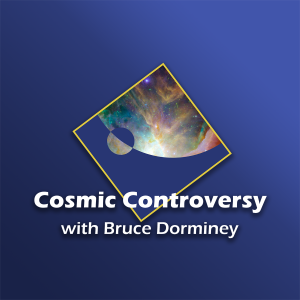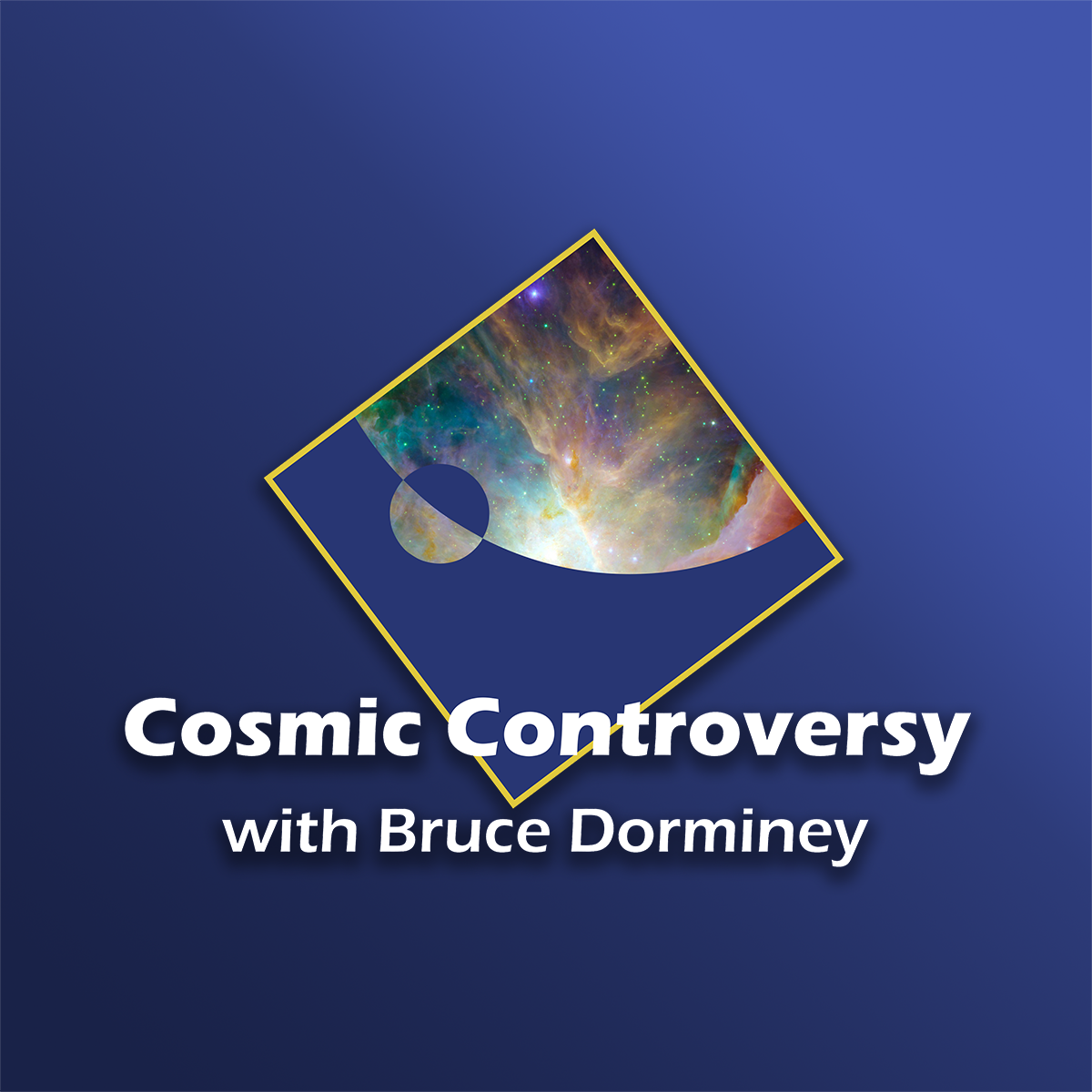Episodes

Friday Sep 10, 2021
Episode 67 --- Mysteries Of The Lunar Surface
Friday Sep 10, 2021
Friday Sep 10, 2021
Guest Benjamin Greenhagen, a planetary scientist at Johns Hopkins University’s Applied Physics Laboratory in Maryland, outlines the lunar surface’s remaining mysteries --- everything from permanently shaded regions at the North and South poles to near and far side impact craters. Greenhagen is the deputy principal investigator of the Diviner Lunar Radiometer instrument onboard NASA’s Lunar Reconnaissance Orbiter (LRO) and is an expert on the geology of the Moon’s surface.

Friday Sep 03, 2021
Episode 66 --- The Big Questions About The Cosmos And Our Existence
Friday Sep 03, 2021
Friday Sep 03, 2021
Guest Paul Davies, a theoretical physicist and director of the BEYOND Center at Arizona State University, gives an enlightening and fascinating interview on the true nature of the Cosmos and why there is something rather than nothing. We also discuss his new book: “What’s Eating the Universe? --- and Other Cosmic Questions.”

Saturday Aug 28, 2021
Episode 65 --- The Future Of Supersonic, Hypersonic and Suborbital Passenger Flight
Saturday Aug 28, 2021
Saturday Aug 28, 2021
Guest Christopher Combs, an assistant professor of aerodynamics at the University of Texas at San Antonio, discusses current prospects for supersonic. hypersonic and even suborbital spaceplane passenger flight. Combs clearly communicates the technical aspects of flight faster than sound and the issues that are hindering our ability to hop from one corner the Earth to the other within 90 minutes or less.

Saturday Aug 21, 2021
Episode 64 --- The Long-Forgotten Tragedy Of The Arctic Airship Italia
Saturday Aug 21, 2021
Saturday Aug 21, 2021
Acclaimed U.K. journalist Mark Piesing chats about his first book N-4 DOWN: THE HUNT FOR THE ARCTIC AIRSHIP ITALIA (Harper-Collins) which tracks the long-forgotten history of how airship and early aviators tried to conquer the North Pole. Umberto Nobile’s Italia airship crashed onto the Arctic ice in May 1928 and sparked an international search before Nobile and what was left of his crew were eventually saved by the then relatively novel technology of radio.

Saturday Aug 14, 2021
Saturday Aug 14, 2021
Guest Sheryl L. Bishop, a social psychologist and professor emeritus at the University of Texas Medical Branch at Galveston gets real about what we need to make happen if astronauts are going to be able to thrive off-world beyond low-Earth orbit. Bishop chats candidly about her new book “Space Habitats and Habitability: Designing for Isolated and Confined Environments on Earth and in Space,” co-authored with Sandra Hauplik-Meusburger.

Friday Aug 06, 2021
Episode 62 --- The Link Between Ancient Astrochemistry And Life On Earth
Friday Aug 06, 2021
Friday Aug 06, 2021
Guest Edwin (Ted) Bergin, professor of astronomy and Chair of the Dept. of Astronomy at the University of Michigan in Ann Arbor, discusses whether our existence in this solar system is directly related to the initial chemical makeup of our star’s protosolar disk from which our planets formed.

Saturday Jul 31, 2021
Episode 61 --- Could A Snowball Earth Happen Again?
Saturday Jul 31, 2021
Saturday Jul 31, 2021
University of Chicago associate professor Dorian Abbot chats about his research on the controversial Snowball Earth Hypothesis. That is, the idea that at least twice in Earth’s geological past, our planet was basically a glacial ball of ice and snow. Abbot says it likely happened some 2 billion years ago and again some 600 to 800 million years ago. There's evidence for at least four such snowball events that likely persisted for tens of millions of years.

Friday Jul 23, 2021
Episode 60 --- Why Our Human Brain Is Undeniably Unique In The Cosmos
Friday Jul 23, 2021
Friday Jul 23, 2021
Our civilization and technology as we know it owes itself to a fluke of evolution that enabled the development of human intelligence. It’s a marvelous and nuanced intelligence that cannot be replicated anywhere else in the cosmos. That doesn’t mean that intelligent life isn’t out there. But it’s likely not very similar to our own. Guest Bret Stetka chats about his new book “A History of the Human Brain” from Workman Publishing and tackles some of humanity’s biggest questions.

Friday Jul 16, 2021
Friday Jul 16, 2021
Darren DePoy, Professor of Astronomy and Associate Dean for Research at Texas A&M University in College Station, talks about using one of Einstein’s little-known and underappreciated method of microlensing to look for extrasolar planets around sunlike stars. An expert on building telescope instrumentation, DePoy outlines the other methods of planet detection and a bit about the difficulties of funding huge astronomical projects such as the Giant Magellan Telescope.

Friday Jul 09, 2021
Friday Jul 09, 2021
Guest Earl Swift, a former reporter for The Virginian-Pilot and New York Times bestselling author of “Chesapeake Requiem” discusses his brand-new book “Across the Airless Wilds---the Lunar Rover and the Triumph of the Final Moon Landings,” just out from William Morrow. Swift talks candidly about how NASA’s Apollo Lunar Moon Rover transformed the Apollo 15, 16 and 17 missions and argues that these last six moon-walking astronauts don’t get enough credit as bona fide explorers.

